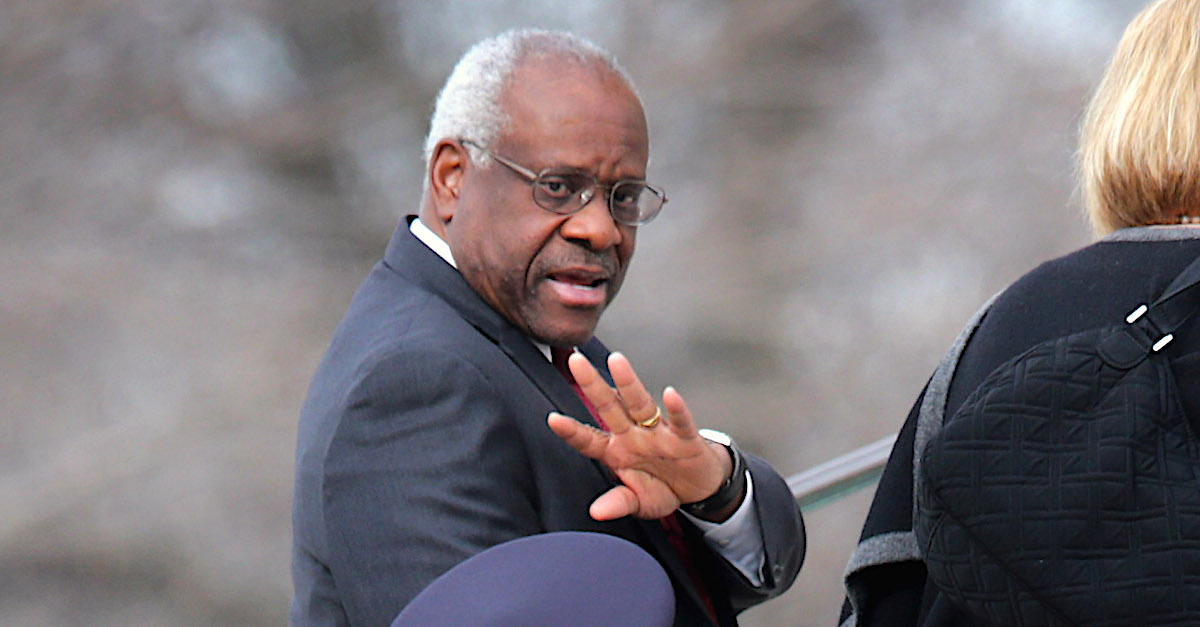
The U.S. Supreme Court heard oral arguments on Tuesday morning regarding the viability of the Affordable Care Act (ACA) absent the individual mandate, which was denatured by Congress in 2017.
Archconservative Justice Clarence Thomas instantly lit up the proceedings–and the commentary on the court’s appreciation of the issue–by asking his first question about a potential mask mandate.
“In today’s terms, I assume that in most places there is no penalty for wearing a face mask, or a mask during COVID,” Thomas said to California Solicitor General Michael Mongan. “But, there is some degree of opprobrium if someone does not wear it in certain settings. What if someone violates that command–let’s say in similar terms to the mandate here–but no penalty, would they have standing to challenge the mandate to wear a mask?”
Mongan argued that under the high court’s own precedent, the relevant question is not whether there is some command but also “whether there is a threat or possibility of enforcement.”
To which Thomas replied: “Is that consistent with some of our, for example, First Amendment jurisprudence where even without a penalty you can have a chilling effect?”
The Golden State solicitor general admitted there are “other legal theories of injury” but said the anti-Obamacare parties did not sufficiently brief those additional theories or plead facts to support them–essentially saying Thomas was bringing up an irrelevant issue.
“We are not in the First Amendment realm,” Mongan noted.
The threshold issue that Thomas was attempting to hash out is the standing doctrine–a Supreme Court-created standard. The basic question is whether or not the court itself has jurisdiction to hear any given case or controversy (lawsuit).
Constitutional scholars note the doctrine is frequently manipulated by the court in order to reach certain conclusions. Many cases live or die based on standing doctrine inquiries alone, often allowing the justices to rule on cases without directly addressing their merits.
The pro-Obamacare parties claim Texas and the other respondents lack standing because they are not subject to a command and do not face any threat of enforcement from the individual mandate. Their argument rests on the idea that the Supreme Court already said the individual mandate is not a command but a “lawful choice” and that the Tax Cuts and Jobs Act of 2017–which eradicated the individual penalty–did not turn the individual mandate into a command.
Additionally, California and the other pro-Obamacare parties say Texas has not established any financial harm from the individual mandate and that the inseverability theory is not enough to create standing under Supreme Court jurisprudence. Effectively, they are looking for a tidy way to avoid the merits here.
Thomas, long an opponent of Obamacare, was positing questions in an apparent bid to poke holes in the standing argument. In other words, he was asking why people who feel they are harmed by the individual mandate don’t have legal standing to sue and oppose the ACA itself.
“The respondents, they are arguing–as we had in the first ACA case–they are arguing that this mandate in combination with the other provisions really caused their injuries.” Justice Thomas said. “What is curious here is we have become accustomed to deciding this at the standing stage, and this looks somewhat like a statutory — this severability issue looks like a statutory construction matter. Could you explain to me why we would determine severability at the standing stage?”
Mongan replied by disputing Texas’s assertion that standing is created simply by virtue of the severability question.
“I don’t know that the court normally does determine severability at the standing stage,” he said. “I suppose it could do that at the process of evaluating the federal government’s theory of standing by severability. We don’t think that is a theory that has been endorsed by the court and it will create tension with this court’s article three president, but typically severability would be analyzed after a ruling on the legality of the provision.”
[Image via Chip Somodevilla/Getty Images]